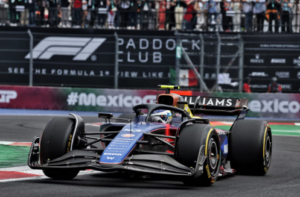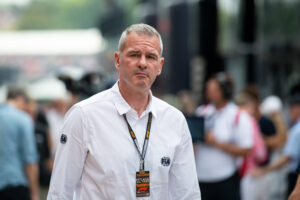For anyone who follows NASCAR or Motorsport in general, it’s a well-known fact that the drivers are definitely classed as athletes. The conditions under which a driver must race are incredibly challenging both mentally and physically. To quote a fact that’s testament to this: In a race, a NASCAR driver maintains the same heart rate – 120-150 beats per minute for 3 hours plus – as a serious marathon runner for about the same length of time. So what about NASCAR drivers who have started to wear heart rate monitors?
NASCAR Drivers Talk About the Pros and Cons of Heart Rate Monitors
NASCAR has so far allowed 11 different devices that can be used. However, the devices may not be wired to the car’s electronics and no external data loggers are allowed. On top of this, information may not be downloaded during qualifying or races.
Jimmie Johnson is an incredibly fit NASCAR driver. He has commented upon this idea and how it might be beneficial for fans and the general public to see the data. This is what he had to say:
“I’m averaging a 130-135 heart rate through a four-hour period of time, and anybody that goes out for a run and tries to carry that heart rate for four hours, they are going to be on the side of the road pretty quick. It helps us tell the story that we are athletes inside these cars more than I can look at another driver’s limited biometrics and say, ‘They had a more difficult time than I did,’ or learn anything from it.”
It is not a rule, and so not every single driver wears a heart rate monitor. For example, there’s Clint Bowyer who sees no benefit in doing so:
“I am sure mine is probably high and low. It just depends. I can tell you this, anybody’s heart monitor in this car, if something bad happens or they get cut off or crash, that will probably be the peak moment — not driving in the corner. We have power steering.”
Bowyer is not alone, as AJ Allmendinger had this to say:
“That is too much technology for me. I know when it’s hot in the race car. I can tell you that. I can tell you my body is real hot. At Phoenix, it was really hot.”
Other drivers such as Joey Logano find it somewhat interesting to see that data in front of them:
“I learned that I’m going crazy inside the car like you think I was. My heart rate is working in there. My heart rate doesn’t slow down. I’m antsy in general. I’m too wired. It’s cool to see your heart rate, in particular restarts, and then on the long run it comes down a bit. The elevation is usually 10 beats at the end of the race. My peak heart rate is at the end of the race, consistently.”
Whilst everyone’s resting heart rates and exertion heart rate zones are different, that’s not to say that the data should be discounted entirely. Brad Keselowski still thinks it can be beneficial:
“Being a race-car driver is probably one of the most underestimated of athletic professions, and it’s good to have information like that to share with everybody to spread the word of what we are and what we do.”
With every driver having differing opinions to various extents on the matter, it just comes down to personal preference in the end. However, it could be a great tool in order for drivers to continue to strive for improvement and success in their quest to win points and races out on the track.
Main Photo






